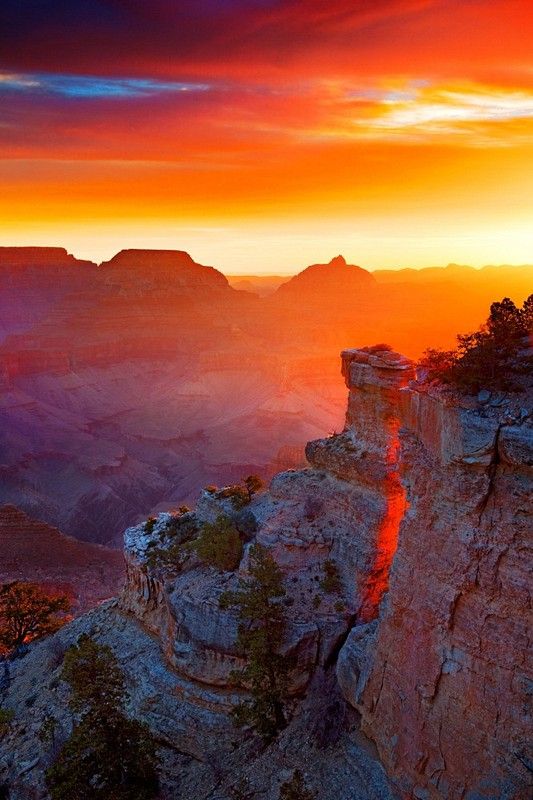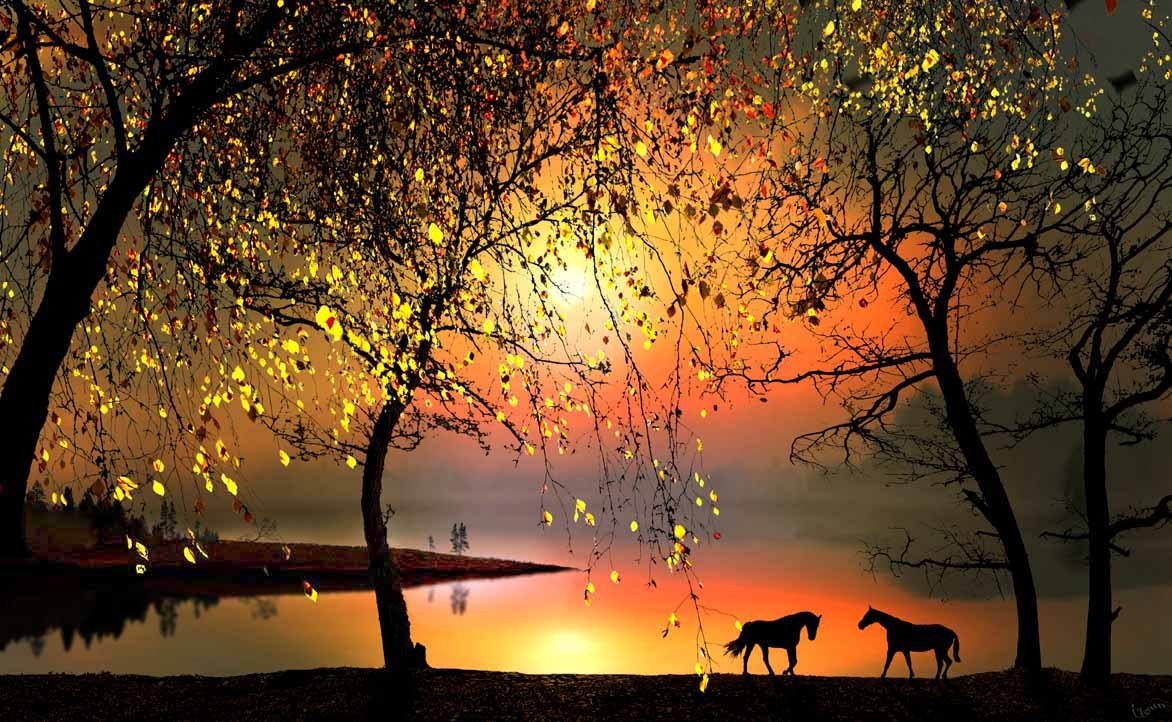A counter-sunset over the canyon and above the cliffs suffuses the sky with great swaths of soft color, fading fast. Standing and turning around after a long meditation overlooking the gorge, I’m stopped in my tracks. A sweep of intense color cuts like a scythe into me. Color is indeed God.
 The yellow, orange and salmon are so overwhelming that I have a hard time walking the half-mile back to the car. And once in the car, the meditative state is so strong that I have to think about each maneuver while driving back as dusk deepens, like you do when you’re first learning to drive.
The yellow, orange and salmon are so overwhelming that I have a hard time walking the half-mile back to the car. And once in the car, the meditative state is so strong that I have to think about each maneuver while driving back as dusk deepens, like you do when you’re first learning to drive.
You may think, ‘I wouldn’t want to experience that.’ Though it isn’t a matter of experience, I assure you, when you do feel such a state, you realize that there is nothing more important in life than to be so affected by beauty that you temporarily lose habitual function.
How brief the light of life, how easily missed the timeless moment! Death encompasses all—the waste as well as the realization of life’s ephemeral eternity and eternal ephemerality.
Benediction does not come to those who look for it, nor those who work for it, only those who passively but intently watch the inner and outer movement until the actuality of death is as near as your breath.
Why is the human mind so imperceptive if the human brain is the only instrument on this planet through which the sacred can consciously flow?
Clearly, it’s because thought dominates and encrusts the brain. That’s the greatest paradox—the very adaptation that gave us the capacity to commune with the highest is the biggest impediment to awakening it.
Sensory delight, joy and love are closely related, but only if the pleasure principle is completely left out of the equation. Pleasure is a thing of thought, of continuity and desire. Sensory delight, joy and impersonal love exist in the moment, or they don’t exist at all. Trying to hang onto them in any way is the way of pleasure, which destroys them.
Being exists in emptiness. Fear, however subtle, prevents the emptying of the mind and heart that allows the emptiness of being. It’s not that one tries to overcome fear, but that one listens to and remains with one’s fear, letting it unfold and tell its story. Then it simply drops away, like a dead leaf of a sycamore tree at the height of autumn.
I had a long talk with an “urban Buddhist monk” in Canada last week. Raised and trained in Sri Lanka, he said during the course of the conversation, “When you’re in Rome, you must become Roman.”
Sensing his unawareness of the deadness pervading the North American culture hearth, I asked if he was still essentially a monk. His reply was evasive, and further communication indicated that as Rome falls he has adapted too well.
Hitching his wagon to the mindfulness fad along the lines of Howard Kabat-Zinn’s “Mindfulness-Based Stress Reduction” system, he has started what he hopes will be the next big thing, the “Mindfulness-Based Suffering Reduction” system. Egad.
I didn’t ask him about the violent Buddhists of Sri Lanka. Like Christianity in the West, Buddhism faces its own crisis in the East, nowhere more so than Sri Lanka, where “a wave of populist chauvinism has engulfed the country and sidelined the Tamil and Muslim minorities that make up over a quarter of the population.”
The article in the New York Times goes on to report: “In Sri Lanka, monks have long been involved in efforts to bolster Buddhist primacy…and in the last decade, activism by Buddhist monks has grown more overtly political.”
“The monks’ backing gave religious legitimacy to the state’s claim of protecting the island for the Sinhalese Buddhist majority as the government intensified its battle against the separatist Tamil Tigers…By instruction or apathy, the police and army look away when hard-line monks incite riots.”
Whether the hard-line monks of Sri Lanka, or the soft-shoe monks of Tibet, the image of Buddhism in the West has nothing to do with the actuality of Buddhism in the East. The religious mind sans belief emerges from its own culture and tradition, even and especially when it supplants a culture and tradition that have become rotten beyond repair.
The urban Buddhist monk replied to questions for mutual inquiry with answers from his teacher role; apparently even monks, suffering from ‘teacher attachment,’ don’t understand the imperative of questioning together.
Like ‘unenlightened’ people, the vast majority of so-called religious teachers view questioning in terms of answers and knowledge, rather than process, insight and continuous learning.
So if the Judeo-Christian stream has dried up, and Buddhism cannot be transplanted to the New World, where are people to find the wellspring of insight and renewal?
We need to stop thinking in terms of traditions, Western or Eastern, and dig our own wells. The waters of life, like the colors of God, flow from beyond them.
Martin LeFevre

